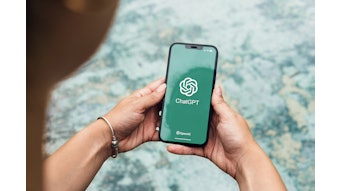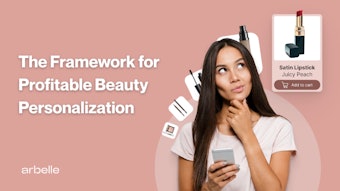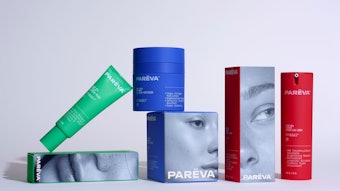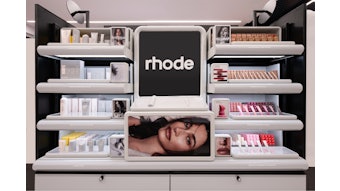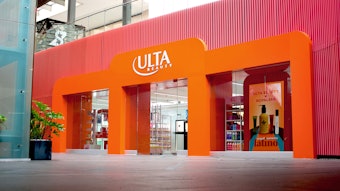- Omni-channel shopping, which refers to consumer desire to use multiple channels simultaneously to make a purchase decision, is part of beauty retailing now, and embracing omni-channel means providing a unified experience for consumers.
- Price, features and availability have been shown to be the most important factors in purchasing decisions, and while brand is still a consideration, it is a limited one for many income groups. Also, the need for speed to close more sales is more often coming into play.
- In-store retailing relies more and more on pricing techniques where customers feel they are getting a deal they can only get in the store.
Today’s beauty shoppers have access to an incredible amount of information, all of which can help them make purchase decisions more quickly than ever. Of course, they will still walk into a store and consider in-store displays. And there are traditional marketing channels, such as magazines and direct mail, that have been mainstays in the industry for years.
But now—through smartphones and other mobile devices—consumers have social media and the Internet right at their fingertips, allowing shoppers to more easily change their minds on a purchase decision in an instant. And it may mean your products don’t make it into their carts as often as you’d like.
The frenetic speed at which today’s consumers shop has led to the emergence of the omni-channel as an important consideration for all retailers. “Omni-channel shopping” refers to consumer desire to make a purchase decision using multiple channels simultaneously.
Embracing the omni-channel means providing a holistic experience for consumers, no matter how or where they touch your brand. From your brick-and-mortar location to your website to your mobile app and beyond, customers should have a unified experience.
The omni-channel shopping era also means if you don’t adapt to consumers’ new shopping habits, you risk getting left behind. The current shopping environment demands that retailers dynamically disrupt the path to purchase—offering nimble, flexible, real-time deals whenever and wherever consumers are looking for them.
Research conducted by Parago during 2013’s peak holiday shopping period identified several trends retailers should prepare for as they enter 2014’s busiest times. The results are important for the beauty industry because they identify a number of emerging omni-channel path-to-purchase trends. In every major category, consumers are now using multiple devices to research and shop. Also, price sensitivity continues to be at an all-time high, driving the desire to find the best deals, and this behavior has accelerated the path to purchase both online and in-store.
The study from Parago shows price, features and availability are the most important factors in purchasing decisions for products and services. Brand is still a consideration, but a limited one for most income groups. And a new factor has come into play to close more sales: the need for speed.
Parago’s research shows consumers no longer spend weeks or months planning purchases, even with higher-priced items. Instead, the average time to purchase a $50 item—a somewhat sizable purchase for an average beauty shopper—is just one to two days. This means you may only have one shot to convince an in-store customer to complete a purchase, so it’s essential you have a strategy in place for each consumer interaction.
Even though the path to purchase is shorter than ever, deal-finding activities continue to increase. Sixty-five percent of shoppers report being more sensitive to price now than they were a year ago. Plus, 88% of consumers look for deals, rebates and best prices in-store before they make a purchase. Consumers appreciate the satisfaction of knowing they’ve found the best price simply by doing what they consider to be basic Internet research.
Many retailers rely upon the fact that, for beauty shoppers specifically, in-store purchases continue to dominate. However, Parago’s research shows online deal seeking is growing, and showrooming continues to be a threat. Four out of five 18- to 49-year-olds own smartphones, and nearly 50% of all shoppers use them to compare prices while in store. Even if a retailer uses smart marketing and promotional techniques to get a consumer to walk through the door, this potential customer may walk out empty handed, choosing to purchase elsewhere for a lower price.
So what can you do to help encourage consumers to stay in and purchase immediately? Sophisticated pricing techniques are key. Best-in-market prices can disrupt the path to purchase for consumers in the middle of the research process. Forty-eight percent of beauty shoppers told Parago they would stop their searches and purchase immediately if offered a $15 rebate on a $50 item. Rebates respond to consumers’ demands for lowest prices while protecting brand margins.
Implementing dynamic rebates and instant discounts may sound intimidating, but the process is relatively simple and can be extremely impactful when done properly.
As technology evolves—and shopping behavior with it—retailers and brands in-store have a smaller window to capture consumers and convert sales with a compelling value proposition. In order to stay ahead, it’s essential to develop new pricing strategies to win the consumer.
Rodney Mason is CMO of Parago, a global thought leader and incentives and engagement provider that delivers billions in rewards to millions of people for leading brands around the world. Mason has developed engagement and loyalty for well-known companies in consumer goods and electronics, financial services, travel, restaurant, entertainment and technology sectors. Reach him on Twitter @rodmoose or e-mail at [email protected], and for a free copy of the report “Need for Speed, Disrupting The Omni-channel,” go to https://bit.ly/1jvOngU.
